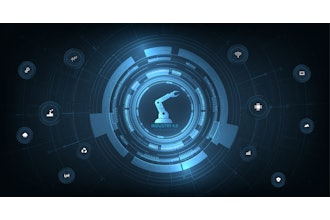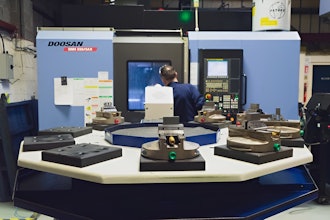
Customer Relationship Management (CRM) systems promise operational efficiency, improved customer insights, and revenue growth. Yet, many CRM implementations fail to meet expectations due to poor user adoption. For small-to-medium-sized businesses (SMBs), resistance often stems from perceived complexity, misalignment with workflows, and insufficient leadership buy-in.
This white paper outlines a pragmatic framework to simplify CRM adoption, focusing on behavioral change, process optimization, and measurable ROI. By addressing root causes of resistance and aligning technology with human needs, organizations can transform CRM systems from administrative burdens into strategic assets.
Key strategies include:
- Co-creating workflows with end-users to ensure alignment with daily tasks.
- AI-driven automation to reduce data entry and enhance decision-making.
- Leadership advocacy that ties CRM usage to performance metrics.
Introduction
CRM systems are critical for SMBs competing in customer-centric markets. However, success hinges on adoption, which can be a challenge as many employees view CRM tools as time-consuming rather than value-adding. Resistance arises from three core issues:
- Behavioral inertia: Employees cling to legacy systems (e.g., spreadsheets) due to familiarity.
- Process misalignment: CRM workflows often conflict with existing operational rhythms.
- Leadership disengagement: Without executive advocacy, CRM becomes a compliance exercise.
Businesses adopt CRM solutions with a vision to streamline operations, improve customer interactions, and drive revenue growth. However, CRM success does not come from installation alone—it depends on behavioral change, sustained user engagement, and seamless integration with existing workflows.
For SMBs, the stakes are particularly high: with limited resources and lean teams, a failed CRM rollout can mean wasted investment, frustrated employees, and missed opportunities for growth.
The flexibility of CRMs can become a barrier when not anchored to clear goals. For a $50M–250M revenue business with 30–300 customer-facing employees, CRM implementation must be lean, efficient, and outcome-driven. Unlike enterprises with dedicated CRM teams, mid-sized businesses require an approach that balances structured adoption with flexibility and a relentless focus on business outcomes.
In this paper, we provide actionable strategies for overcoming the most persistent barriers to CRM adoption and maximizing return on investment. We will guide readers through a pragmatic adoption strategy tailored to the realities of SMBs. We will explore how to drive behavioral change and team buy-in by co-creating workflows with end users, using incentives and gamification, and embedding continuous, role-based training.
Furthermore, we will examine how to streamline CRM processes by:
- Automating repetitive tasks.
- Integrating CRM with existing business workflows.
- Focusing on essential features that deliver immediate value.
Leadership-driven advocacy will be highlighted as a critical success factor, with practical advice for tying CRM usage to performance metrics, embedding CRM in executive decision-making, and tracking ROI through meaningful metrics.
Finally, we will discuss how to sustain long-term CRM adoption by building feedback loops, leveraging CRM analytics for ongoing improvement, and cultivating a culture where CRM is the backbone of customer-centric operations. Each strategy is designed to address the real-world challenges faced by business leaders, ensuring that CRM becomes a driver of efficiency, alignment, and measurable business growth.
Understanding CRM Resistance
At the heart of every CRM implementation are people whose daily workflows, motivations, and anxieties help determine whether technology becomes an asset or an obstacle. As Hoffman explains, “Everybody sells differently, everybody uses leads and opportunities differently…it’s as much art as it is technology.” This flexibility of methods, while a strength, can also be a barrier if your CRM is not anchored to clear business goals and user needs.
Process Disconnects: The Workflow Gap
CRM systems often fail when they do not reflect the real workflows and priorities of their users. For example, requiring sales teams to log every customer interaction in real time can disrupt relationship-building and feel disconnected from how they actually work. If CRM processes are layered on top of, rather than integrated into, daily routines, employees will revert to old habits—using spreadsheets, email, or even paper notes.
Leadership Gaps: The Importance of Executive Engagement
Only 29% of executives actively use CRM data for decision-making, signaling to teams that the tool is optional. Hoffman emphasizes, “If leaders don’t reference CRM in quarterly reviews, employees won’t prioritize it.”
Research from Prosci shows that projects with strong change management and user adoption initiatives are seven times more likely to meet their objectives. Leadership must model the desired behavior and tie CRM usage to performance metrics to drive true adoption.
The Role of Change Management
Change management is often misunderstood or undervalued. As Hoffman observes, “Change management sounds like a buzzword, but it’s really about proper preparation, education, engagement, and collaboration with end users—a little bit of stick and a lot of carrot.”
Successful change management means:
- Involving users early in the process to build ownership.
- Providing tailored, role-based training and ongoing support.
- Communicating the “why” behind CRM adoption, not just the “how.”
- Creating incentives and recognition programs to reward adoption and innovation.
Data Quality and Integration Issues
Poor data quality and lack of integration with other business systems (ERP, marketing automation, etc.) can also undermine CRM adoption. If users encounter duplicate records, incomplete information, or have to enter data multiple times in different systems, frustration grows and trust in the CRM erodes. Ensuring CRM becomes the “single source of truth” for customer data is essential for long-term success.
Cross-Departmental Collaboration and Silo-Busting
Another common barrier is the misconception that CRM is only for sales or customer service. In reality, CRM should be a cross-functional platform supporting marketing, finance, operations, and service teams. When CRM is siloed, its value is diminished, and adoption suffers. True success comes when all customer-facing teams see CRM as integral to their work.
Common Root Causes of CRM Resistance
| Cause | Impact on Adoption | Mitigation Strategy |
|---|---|---|
| Lack of user involvement | Low ownership, high resistance | Co-create workflows, early feedback |
| Overcomplexity | User overwhelm, avoidance | Simplify interface, focus on essentials |
| Insufficient training/support | Frustration, reversion to old tools | Ongoing, role-based training |
| Unclear value proposition | Low motivation, disengagement | Leadership communication, incentives |
| Poor data quality/integration | Distrust, duplicate work | Data governance, system integration |
| Siloed implementation | Limited impact, inconsistent use | Cross-departmental collaboration |
Understanding and addressing these human, process, and leadership barriers is the foundation for any successful CRM adoption strategy. As Hoffman advises, “You have to simplify their lives. CRM is there to free up time for people to do the most important things in their job.
Successful CRM is easy to work with, not hard.” Later sections of this paper will provide concrete strategies for overcoming these barriers, driving user engagement, and ensuring CRM delivers measurable business value.
In a 2025 interview, Hoffman highlighted: "CRM success starts with understanding the end-user’s day. If a salesperson spends hours retyping notes post-meeting, the system isn’t simplifying their job—it’s complicating it."
Strategies for Simplifying Adoption
- Drive Behavioral Change Through Ownership
- Co-create workflows: Involve end-users in CRM design. For service teams, prioritize quick-access ticket histories over sales-focused pipeline views.
- Reward engagement: Introduce rewards for CRM milestones (e.g., logging 90% of client interactions weekly).
- Microlearning: Replace hour-long trainings with 5-minute video tutorials embedded in the CRM interface.
- Streamline Processes with Automation
- AI-driven task automation: Use tools such as Creatio’s AI agent to transcribe calls, summarize interactions, and auto-populate fields.
- Role-based dashboards: Provide finance leaders with real-time revenue forecasts while giving HR streamlined employee performance metrics.
- Secure Leadership Advocacy
- Lead by example: Require executives to use CRM for quarterly reviews and strategic planning.
- Tie CRM to KPIs: Link 20% of managerial bonuses to team adoption rates.
- Transparent ROI tracking: Share monthly reports showing how CRM data reduced sales cycles or improved customer retention[^19].
- Foster Continuous Improvement
- Feedback loops: Conduct biweekly surveys to identify pain points and iterate[^20].
- Adaptive training: Use AI to recommend tutorials based on user behavior (e.g., frequent errors in report generation).
Measuring and Maximizing ROI
| Metric | Target for SMBs | Impact on ROI |
|---|---|---|
| User adoption rate | ≥80% within 90 days | +25% sales efficiency[^22] |
| Data accuracy | ≥95% completeness | -15% operational costs[^23] |
| Customer retention | +10% YoY | +30% lifetime value[^24] |
Cost-Benefit Analysis.
- A 50-employee SMB investing $25,000 annually in CRM can expect:
- $98,000 savings from reduced manual data entry[^25].
- $220,000 revenue lift from improved lead conversion[^26].
Insight from McKinsey: Companies that align AI with human workflows see 3x faster ROI than those focusing solely on automation.
AI as a Catalyst for CRM Adoption and User Experience
Artificial Intelligence (AI) is rapidly redefining the landscape of CRM adoption by directly addressing one of the most persistent barriers: administrative burden. For mid-sized businesses, where employees often juggle multiple roles and resources are limited, the promise of AI is not just about futuristic capabilities, it is about making everyday work simpler, faster, and more rewarding.
From Manual Data Entry to Intelligent Automation
Traditional CRM systems have long struggled with user resistance, much of which stems from the perception that CRM is “just more work.” As Hoffman notes,
“Imagine this: I’m a salesperson in the field. I go around, I talk to customers, I talk to prospects, and then what do I have to do? I have to go back to the hotel room and retype all of my notes into Salesforce.com. That is not a good employee experience. That’s why salespeople complain about it.”
AI is poised to eliminate this pain point by automating data capture and entry, freeing sales and service professionals to focus on what they do best: building relationships and driving value.
Some key AI-driven CRM solutions can include:
- AI-Powered Transcription and Summarization. AI tools can now listen to calls, meetings, or in-person conversations and automatically transcribe, summarize, and log the relevant information directly into the CRM. This not only saves hours of manual work but also improves the accuracy and completeness of customer records. As Hoffman describes, “If I could turn on my phone recorder, or if I’m on a Teams call with somebody, the system is automatically summarizing that call or transcribing it. And then it automatically creates an outbound phone call at that date and time by that user in the CRM system that they can refer back to any time.”
- Automated Task Creation and Follow-Up. AI agents can proactively generate follow-up tasks, reminders, and next steps based on conversation content or customer status. This ensures that important actions are not forgotten and that sales cycles move forward efficiently, without relying on users to manually create every activity.
- Contextual Insights and Meeting Preparation. AI can aggregate emails, past interactions, purchase history, and support tickets to prepare a comprehensive summary for upcoming meetings or reviews. Hoffman gives a practical example: “I can simply type into AI, ‘Please summarize a quarterly business review for account XYZ for my meeting on Thursday,’ and it spits something out. Now, is it perfect? No. But imagine having to do that from scratch in five different systems versus something getting me 85% of the way there, and then me just tweaking it. It just saved me three hours. Three hours I can serve customers.”
- Knowledge Management and Support Automation. For customer service teams, AI can surface relevant knowledge base articles, prior case resolutions, and recommended next steps in real time, dramatically reducing the time required to resolve common issues—especially for new or less experienced team members.
- Personalized, Automated Communications. AI-driven chatbots and virtual assistants can handle routine inquiries, appointment scheduling, and follow-up communications, ensuring customers receive timely responses while freeing staff for higher-value work.
Reducing Cognitive and Administrative Load
The administrative overload of CRM is about time as well as cognitive load. Studies in healthcare, a sector with parallel administrative challenges, show that AI-powered documentation tools can reduce after-hours work (“pajama time”) by 30% and give providers an average of 15 minutes of personal time back each day. In the CRM context, this means employees spend less time on repetitive data entry and more time engaging with customers or focusing on strategic initiatives.
AI and Data Quality: Creating a Trusted Single Source of Truth
Another critical benefit of AI is its ability to improve data quality. AI can automatically detect duplicate records, flag incomplete information, and validate data against external sources. This is vital for mid-sized businesses, where incomplete or inconsistent data can undermine the entire CRM initiative and erode user trust.
Custom AI Models and Data Privacy
A key insight from Hoffman’s interview is the emerging trend of organizations building their own AI language models, tailored to their specific data and workflows. Hoffman explains,
“If an AI-enabled CRM implementation is done properly, we can build our own language model self-contained within our company. You’re not sharing it publicly as you would be with ChatGPT.”
This approach addresses concerns about data privacy and competitive advantage, enabling businesses to benefit from AI without exposing proprietary information.
AI Adoption: Challenges and the Path Forward
Despite the clear benefits, AI adoption in CRM is not uniform across industries or organizations. Legacy processes, cultural resistance, and the perceived complexity of AI can slow uptake. Hoffman observes, “AI adoption will depend on industry. It’ll also depend on segments within industry.” For AI to deliver on its promise, it must be integrated seamlessly into existing workflows, with a focus on simplicity and user empowerment—not just automation for automation’s sake.
Some best practices for leveraging AI in the CRM can include:
- Start with the End User. Design AI-powered features around the daily tasks of your users. Involve them in pilot programs to ensure the technology truly reduces workload, not adds to it.
- Automate, But Don’t Alienate. Use AI to handle repetitive, low-value tasks, but maintain human oversight for critical decisions and relationship-building activities.
- Prioritize Data Integration. Ensure AI tools can access and update information across all relevant systems (CRM, ERP, support platforms) to avoid data silos and maximize value.
- Invest in Training and Change Management. Provide clear, ongoing education about how AI features work, their benefits, and how to troubleshoot issues. Address fears about job displacement by emphasizing AI’s role in freeing up time for higher-value work.
- Measure and Communicate Impact. Track metrics such as time saved, reduction in manual entries, and improvements in data quality. Regularly share these wins with users and leadership to reinforce the value of AI-driven CRM.
AI as an Enabler, not a Replacement
The true power of AI in CRM lies in its ability to make technology invisible, removing friction, surfacing insights, and enabling employees to focus on what matters most. As Hoffman concludes, “AI, in its intent and usability, is simple… it’s meant to enhance what people do in their CRM.” For mid-sized businesses, embracing AI in CRM is about building a foundation for sustainable growth, higher user satisfaction, and a measurable return on investment.
Conclusion
CRM adoption is an ongoing journey that requires a thoughtful blend of technology, process, and people-centric strategies. As explored throughout this white paper, the path to successful CRM adoption and enhanced ROI for small- and medium-sized businesses is paved with both challenges and opportunities.
Some key takeaways for business leaders should include:
- Understanding Resistance. User resistance is rooted less in technology and more in human behavior, organizational culture, and process misalignment. Employees often perceive CRM systems as complex, burdensome, or disconnected from their daily work. Overcoming this starts with recognizing those concerns, involving users early, and designing CRM processes that genuinely simplify their tasks rather than add to them.
- Driving Behavioral Change and Team Buy-In. Adoption thrives when employees are engaged as co-creators, not just end users. Clear guidelines, incentives, and quick wins are essential. Ongoing role-based training, and regular feedback loops help foster a sense of ownership and accountability, transforming CRM from a compliance requirement into a valued productivity tool.
- Streamlining CRM Processes. Automation and integration are critical to reducing administrative burden. AI-driven features—such as automated data capture, intelligent reminders, and contextual insights—free employees from repetitive tasks and allow them to focus on higher-value activities. Customizing CRM interfaces and workflows to match real-world business processes ensures the system works for users, not against them.
- Leadership-Driven Advocacy. Executive engagement is a decisive factor in CRM success. When leaders use CRM data for decision-making, reference it in meetings, and tie its usage to performance metrics and incentives, it signals organizational commitment and sets the tone for adoption across all levels.
- Measuring and Sustaining ROI. Effective CRM adoption is measurable. Tracking user adoption rates, data quality, and business outcomes such as sales efficiency and customer retention provides clear evidence of value. Continuous improvement, supported by CRM analytics and regular process reviews, ensures the system evolves with the business and remains aligned with strategic goals.
- The Role of AI. AI is rapidly transforming CRM from a static database into a dynamic assistant. By automating data entry, providing actionable insights, and enabling personalized experiences, AI reduces cognitive and administrative load. This not only boosts productivity but also enhances user satisfaction and long-term engagement with the CRM platform.
- Change Management as an Embedded Practice. Successful change management is not a separate project but an integral part of CRM deployment. It involves clear communication, role-based training, ongoing support, and recognition of champions within the organization. The most effective change management is embedded in daily workflows, supported by technology, and reinforced by leadership.
- Breaking Down Silos. CRM should not be viewed as a tool solely for sales or customer service, but as a cross-functional platform that unites marketing, finance, operations, and support. When integrated across departments, CRM becomes the single source of truth for customer data, driving alignment and collaboration throughout the business.
Simplifying CRM adoption requires a holistic approach that balances technological innovation with human-centered design and leadership commitment. By implementing the actionable strategies outlined in this paper, such as co-creating workflows, leveraging automation and AI, embedding change management, and measuring impact, SMBs can overcome user resistance and build a culture where CRM is the backbone of customer-centric operations.
Next Steps
- Audit your current CRM adoption barriers and opportunities.
- Engage cross-functional teams to redesign workflows and processes.
- Implement a structured, phased adoption roadmap with clear KPIs.
- Foster continuous improvement through feedback, analytics, and leadership advocacy.
By following these steps, businesses can ensure that their CRM investment delivers sustainable value, empowering teams, delighting customers, and driving growth.
To further assist in your digital transformation strategies, consider checking out the following webinars:
- Drive 100% User Adoption Easily. Are you struggling with low CRM adoption rates? Many mid-sized businesses invest in powerful tools but fail to get their teams fully onboard. This live event is tailored for Operations Leaders, Sales Managers, and IT Leaders who want actionable strategies for achieving complete user adoption. In just 45 minutes, you'll discover:
- A proven change management strategy for full CRM adoption.
- Key phases of adoption: launch, active usage, and value recognition.
- How executive sponsors, champions, and trainers play critical roles in success.
- Techniques to track ROI, drive leadership advocacy, and ensure continuous training.
- Metrics that measure engagement and improve forecast accuracy.
- Incentive programs that inspire teams to fully embrace CRM tools.
- Join Bill Hoffman as he shares his expertise on turning your CRM into a fully adopted asset that drives measurable business.
- Turn CRM Chaos Into Revenue Growth. Are manual processes and poor user adoption killing your CRM's potential? Many businesses invest in CRM technology only to see disappointing results due to low adoption rates and disconnected workflows. This live event reveals how to transform your underperforming CRM into a revenue-driving powerhouse. You'll discover proven strategies that leading companies use to achieve 100% user adoption and measurable business growth. In this 45-minute session, you'll learn:
- How to eliminate manual data entry and automate critical business processes that save hours each week.
- 3 proven strategies to drive complete user adoption across sales, marketing, and customer service teams.
- The secret to connecting CRM with your existing systems without expensive custom development.
- Examples from companies that increased revenue by 25% through smarter CRM implementation.
- Attending this live event will help you break free from CRM frustration and finally achieve the business transformation you expected when you first invested in customer relationship management technology.
- Also available for on-demand viewing are Empowering Manufacturers with Modern CRM and Unlock Success with Smarter CRM.






















